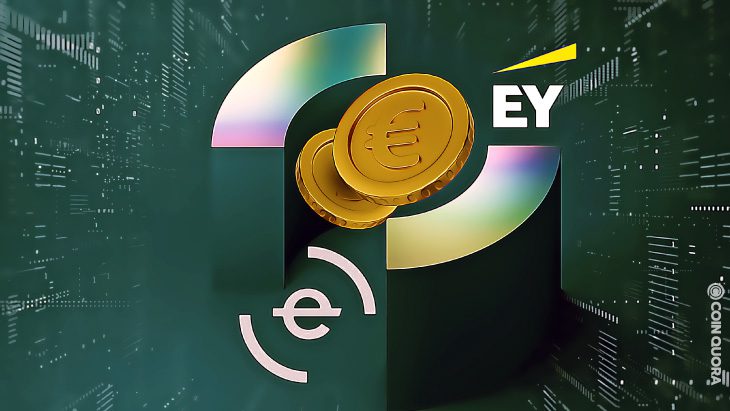- Greenback paper currency’s global status has made the crypto-economy tether with USD.
- However, e-Money blockchain’s EUR stablecoin brings solutions to offramp the dollar.
- Russia, China, and other countries are exploring an alternative to the US dollar.
The US dollar is always the center of international market attention, but of late the collective gaze has become even more intent. Questions marks over the greenback’s supremacy continue to swirl, buffeted by the winds of change that seem destined to gather momentum following the US government’s imposition of sanctions on Russia. Indeed, Federal Reserve Chairman Jerome Powell recentlyacknowledged the prospect of countries adopting a reserve currency other than the USD.
Russia isn’t the only nation-state exploring an alternative to the dollar, incidentally; its close ally China is in the same boat, with both nations having stepped up theirhoarding of gold in recent years. Russia and India have alsoabandoned the use of dollars in mutual settlements, with all payments made in rubles and rupees; and Saudi Arabia isreportedly considering selling oil to China for yuan instead of USD.
So, where do these shifting sands leave crypto’s booming stablecoin market, most of which is denominated in US dollars? Stablecoins settled over $6 trillion in value last year, and the global market is now worth a staggering $185 billion, with the vast majority of volume flowing through collateralized USD. Astonishingly, the two best-known dollar-pegged crypto-assets – Tether (USDT) and USD Coin (USDC) – represent the lion’s share of the aforementioned pie, with a combined market cap of $132.5 billion.
Stablecoin Instability
Due to the greenback’s global reserve status, large swathes of the world economy are overexposed to the asset. And the same can be said for the crypto-economy since the fortunes of a great many projects are tethered to those of USD-denominated stablecoins.
And that’s not the only problem. Independent of the dollar’s precarious position, stablecoins have long been the subject of interest from regulators, not all of whom are convinced about their redeemability. Last year, the Commodity Futures Trading Commission (CFTC) slapped Tether with a $41 million fine for making“untrue or misleading statements and omissions of material fact” in relation to its dollar reserves.
In November, ajoint report by the Treasury, the Federal Reserve, the Securities and Exchange Commission (SEC), and the CFTC also proposed limiting stablecoin issuance to entities whose deposits are fully insured under US law. Nonetheless, fear, uncertainty and doubt often plagues the stablecoin market due to persistent regulatory scrutiny. Andtalk of a US Central Bank Digital Currency (CBDC) has done nothing to dampen such sentiments.
The launch of a US CBDC would undoubtedly exert greater pressure on existing stablecoins, some of which suffer from a lack of transparency (no proof of funds) and use over-collateralized assets to maintain their value. In the case of the latter, liquidations can occur if the collateralized asset should suddenly lose value.
Euro-Backed Stablecoin Offers Dollar Off-Ramp
Not all stablecoins are denominated in dollars, of course.e-Money’s full collateralized interest-bearing stablecoin, eEUR, represents a convenient offramp from the dollarized system, enabling users to transact with a collateralized, audited stablecoin of the fiat used by 19 of the European Union’s 27 member states.
Available on several blockchain ecosystems – Ethereum, Cosmos ecosystem and soon to make its debut on Avalanche – eEUR is fully compliant with European regulations and relies on a dynamic peg that tracks the underlying interest rate, suitable for positive and negative interest rate environments. Unlike some questionable projects, the Danish fintech firm’s stablecoins are entirely backed by bank deposits and low-risk government bonds held by commercial European banks. For peace of mind, proof of funds reports are published by Ernst & Young every quarter.
Positioned to become a sort of “circle for the Eurozone”, eEUR is intended for use in decentralized finance applications such as liquidity mining programs, as well as for long-term store of value and as a fiat on/off ramp for crypto traders. With the dollar under increasing pressure, not just from regulators but due to wider global events, euro-backed stablecoins like eEUR allow people to limit their exposure to a single national currency. What’s more, e-Money’s native payment network comes with the added bonus of near-zero transaction fees and immediate finality.
Is the future of the US dollar in peril? Perhaps it’s too early to say. Either way, the long-awaited arrival of stable and liquid alternatives within the crypto ecosystem is a cause for celebration.
Disclaimer:CoinQuora does not, and will officially not endorse any company or individual on this sponsored article. Any information published in this sponsored article does not equal financial advice. We encourage everyone to do their own research before investing in cryptocurrencies.


